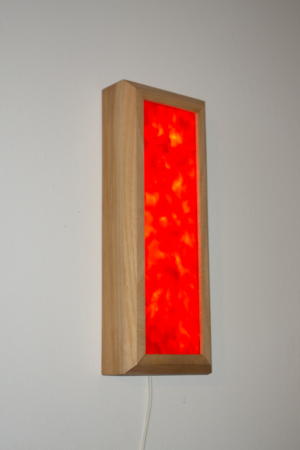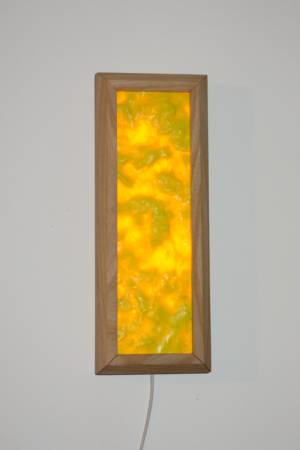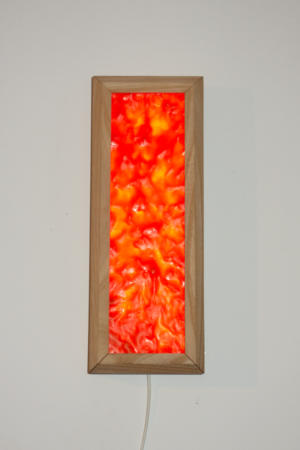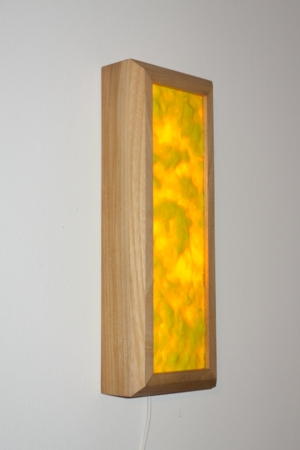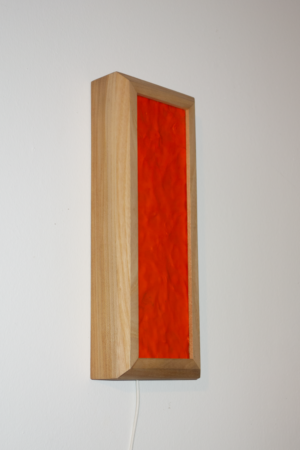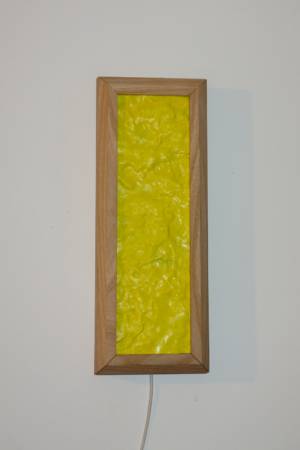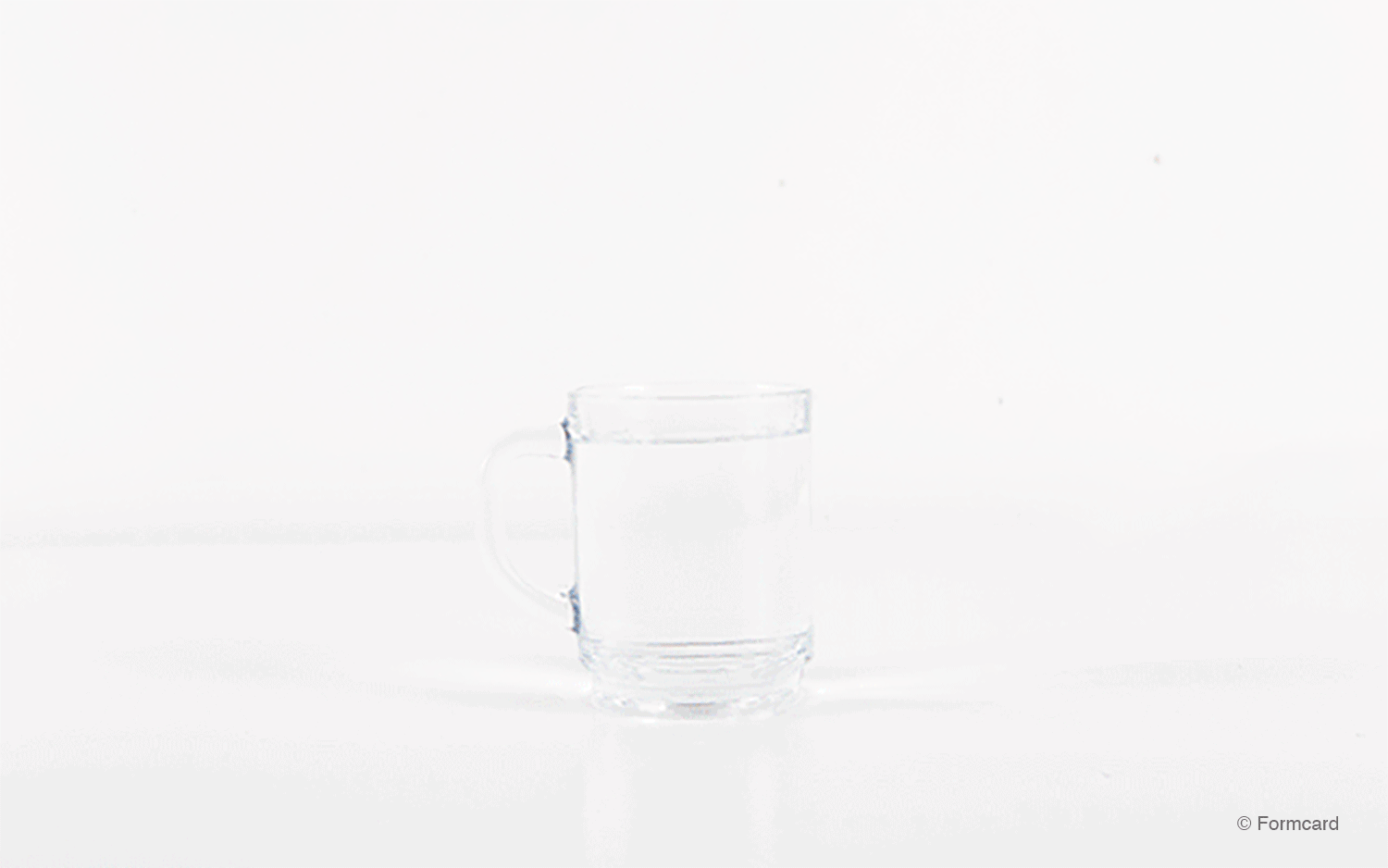My approach to working with FORMCARD was to seek out high-quality surfaces and to avoid the automatic DIY aesthetic.
After extensive experimentation, I discovered the dynamic transparency of stretched and thinned material. This discovery enabled me to achieve my objective by intentionally utilising the DIY characteristics and providing them with a new context. The concept of a mood lamp was created.
Through the technique of stretching and pushing the material on a hot surface, I was able to create large and thin sheets with a changing transparency.
These sheets were cut into rectangles and subsequently used as the lampshades.
The housing for the lamp was constructed from wood and consisted of two parts.
The first part was mounted on the wall, serving as the base and housing the light source. The second part holds the lamp sheets and can slide easily onto the base.
The main idea is to buy the skeleton of a lamp and create the lampshades independently in personal process using FORMCARD. This approach provides the object with an infinite range of aesthetics and creates a strong emotional connection to the owner.
Once a shade becomes boring, a new one can be created and exchanged easily.
